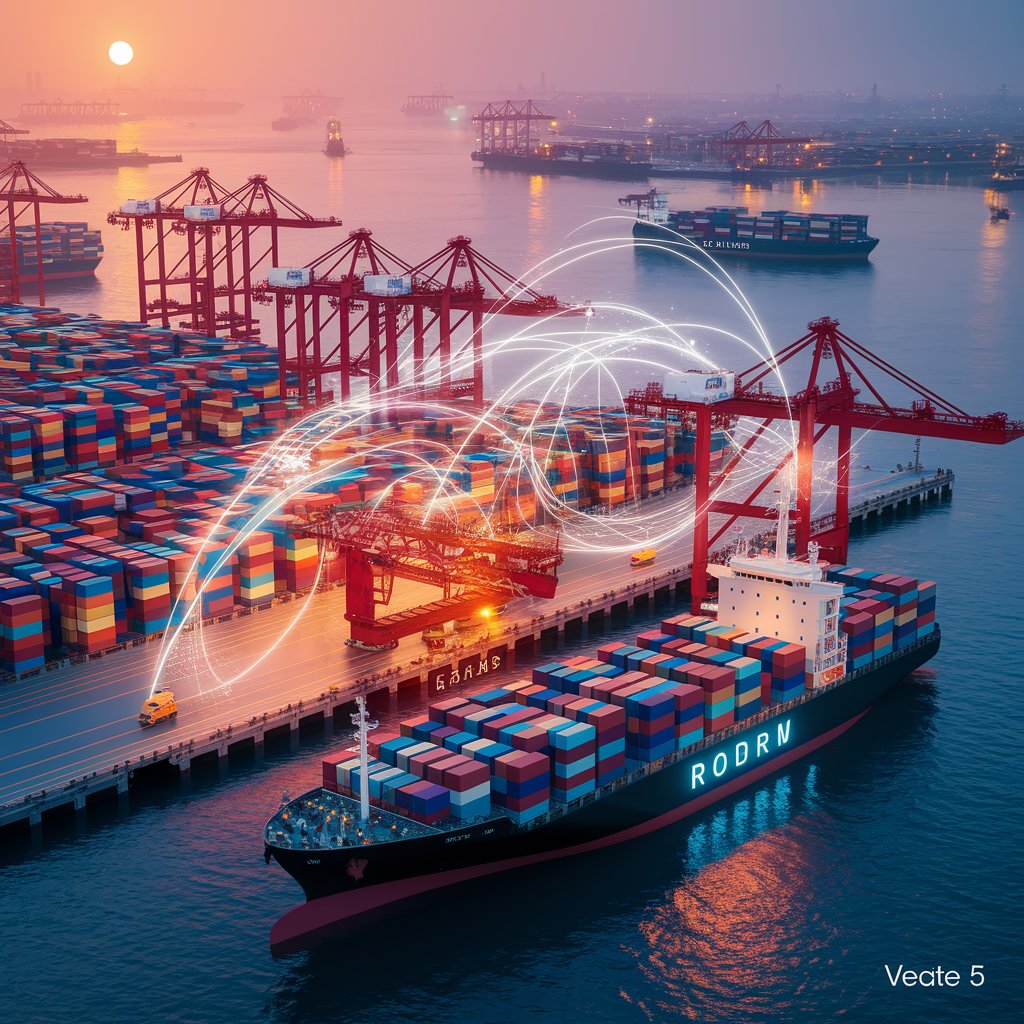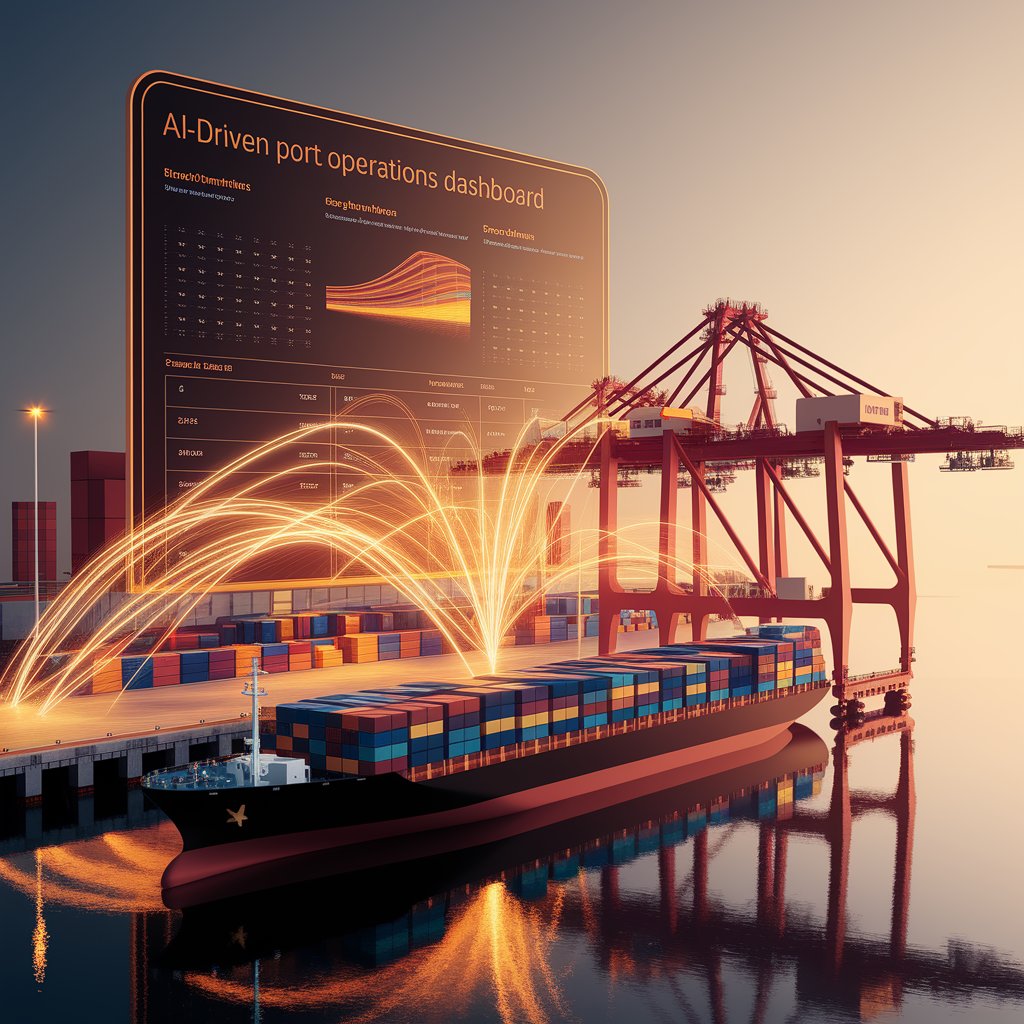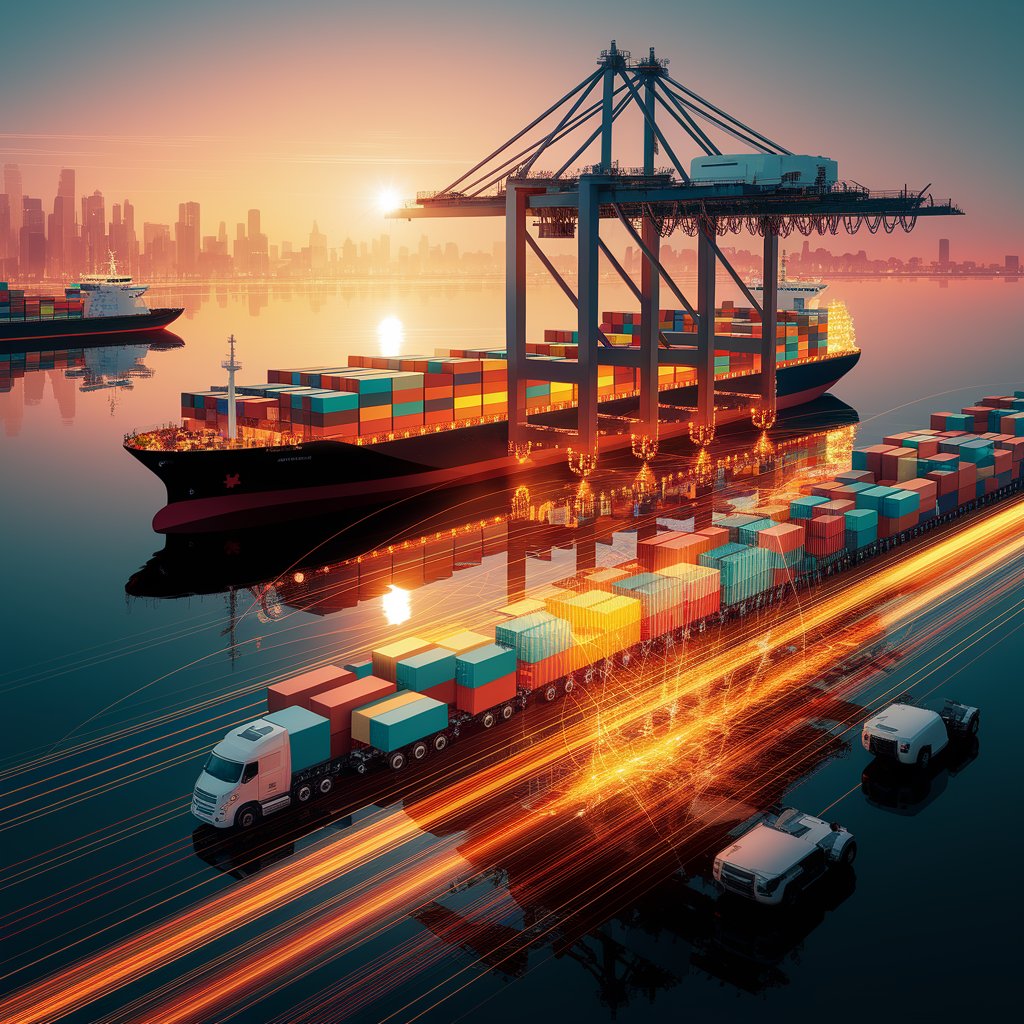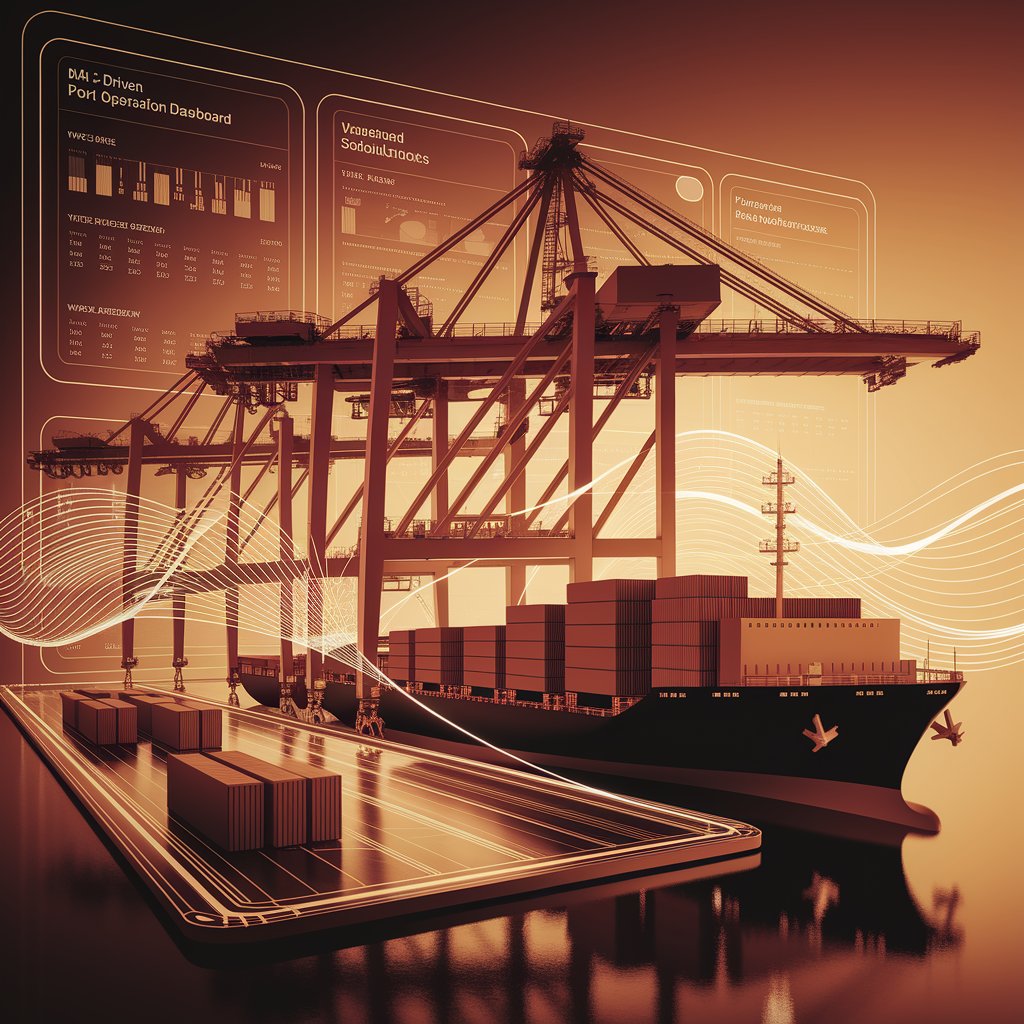AI-Driven Port Operations: Smarter, Faster, and More Resilient Maritime Logistics

Introduction
Today’s logistics challenges demand a smarter approach. AI-driven port operations harness artificial intelligence, big data, and automation to optimize every aspect of port management, from vessel scheduling to container handling. The result: more efficient, resilient, and sustainable maritime logistics.
What Are AI-Driven Port Operations?
AI-driven port operations use artificial intelligence and machine learning to analyze data from vessels, terminals, weather systems, and logistics networks. Instead of reacting to disruptions, AI anticipates them and provides solutions in real time.
Key AI capabilities include:
- Predicting vessel ETAs with high accuracy
- Automating berth allocation and crane scheduling
- Forecasting yard congestion and optimizing container stacking
- Monitoring equipment health with predictive maintenance
- Enhancing safety and compliance through real-time monitoring

Key Features of AI-Driven Port Operations
- Berth & Vessel Scheduling – AI forecasts arrivals and assigns berths with minimal idle time.
- Automated Crane Operations – Algorithms manage container loading/unloading speed.
- Yard Management Optimization – AI reduces congestion by simulating container flows.
- Predictive Maintenance – ML models detect early signs of equipment failure.
- Digital Port Dashboards – Real-time KPIs for operators, carriers, and shippers.
- AI-Powered Security & Compliance – Automated checks for cargo, documentation, and safety.
Benefits of AI-Driven Port Operations 📈
- Reduced Congestion – Faster turnaround times for vessels.
- Cost Efficiency – Lower fuel use, labor inefficiencies, and detention fees.
- Operational Resilience – Proactive response to disruptions (weather, strikes, surges).
- Customer Experience – Reliable ETAs and transparent updates for shippers.
- Safety Improvements – AI detects risks in crane operations and cargo handling.
- Sustainability – Optimized scheduling reduces idle emissions and energy waste.

Real-World Applications
- Port of Rotterdam – AI predicts vessel ETAs 20% more accurately, reducing waiting times.
- Singapore PSA – Machine learning optimizes container yard stacking and crane allocation.
- Port of Los Angeles – AI helps mitigate congestion by aligning trucks, vessels, and rail.
- Hamburg Port – Predictive maintenance reduces crane downtime by 30%.
- Shanghai Port – AI monitors cargo flows across the busiest container terminal globally.
Technical Deep Dive 🔍
AI-driven port operations use multiple algorithms and models:
- Supervised ML models – Train on historical vessel data to forecast arrivals.
- Reinforcement learning – Simulates different crane operations to maximize throughput.
- Neural networks – Improve predictive maintenance by analyzing sensor data.
- Digital twins – Create virtual replicas of ports to test scheduling strategies.
These technologies work together to build self-optimizing port ecosystems.

Challenges in Implementation
- High Investment Costs – Infrastructure and AI models require capital.
- Legacy Systems – Many ports run on outdated TOS (Terminal Operating Systems).
- Data Standardization – Lack of harmonized data across global shipping lines.
- Cybersecurity Risks – Ports are critical infrastructure vulnerable to attacks.
- Workforce Resistance – Automation may face union and labor pushback.
Best Practices for Success
- Start with Pilot Projects – Test AI on berth scheduling or predictive maintenance.
- Adopt Modular Integration – Connect AI gradually with existing TOS, ERP, and IoT systems.
- Ensure Data Quality – Standardize vessel and cargo data formats.
- Strengthen Cybersecurity – Use encryption and real-time monitoring.
- Engage Stakeholders – Collaborate with carriers, terminal operators, and regulators.
- Measure ROI – Track time savings, cost reductions, and emissions improvements.
The Future of AI-Driven Port Operations 🚀
- Fully Autonomous Ports – AI orchestrating vessel, yard, and crane operations end-to-end.
- Blockchain-Integrated AI – Secure and tamper-proof documentation workflows.
- Global AI Port Networks – Ports sharing intelligence across global trade lanes.
- Green Ports – AI optimizing operations for lower emissions and renewable energy use.
- Edge AI in Ports – Real-time decision-making directly at cranes, sensors, and vessels.
Conclusion
AI-driven port operations are redefining maritime logistics by bringing intelligence, automation, and resilience to the global trade network. Ports that adopt AI will reduce congestion, lower costs, and improve customer experience—while building sustainability into every operation.
For global logistics and trade, embracing AI-driven port operations isn’t just an upgrade—it’s the future of competitive, efficient, and resilient supply chains.
